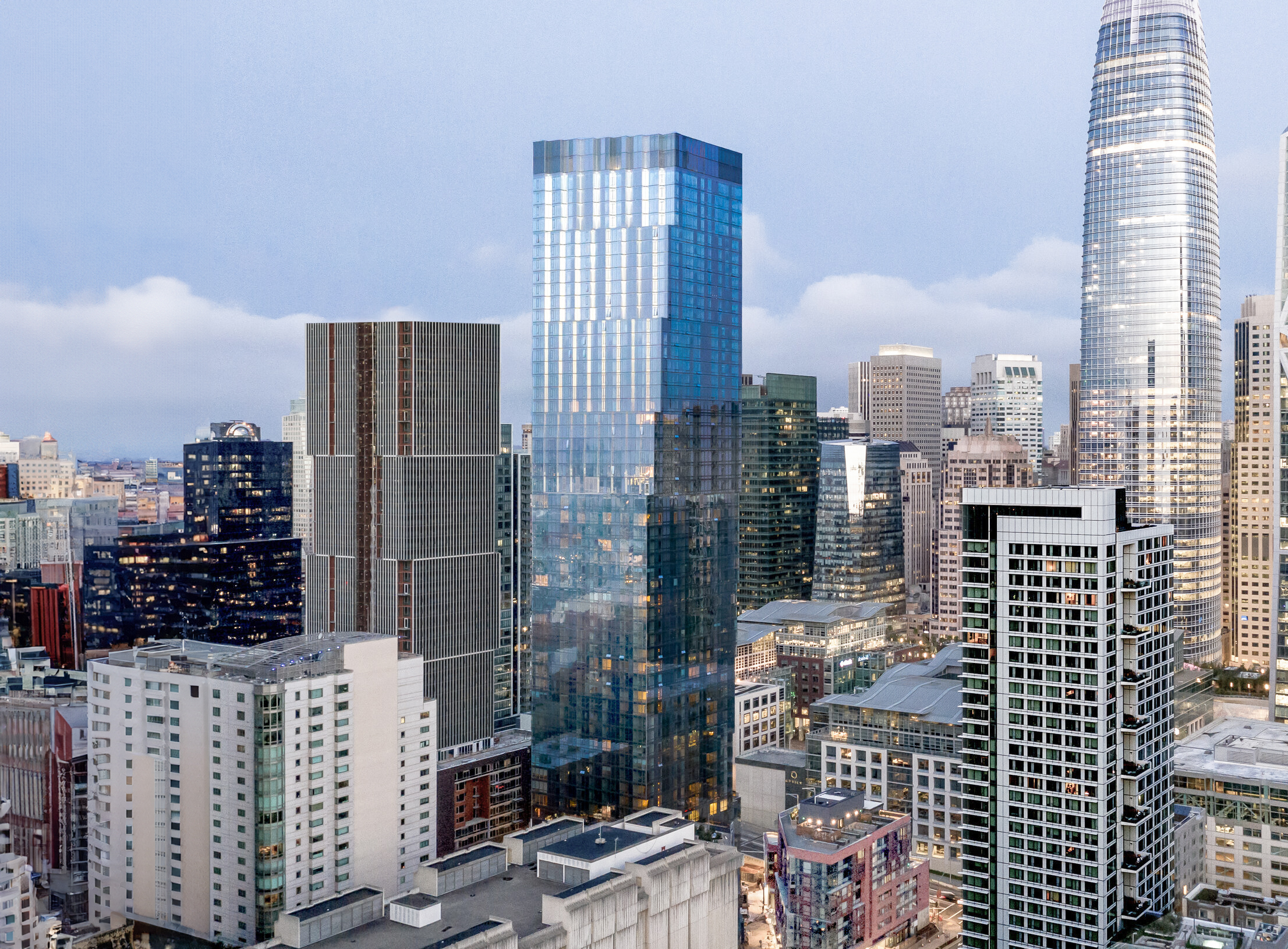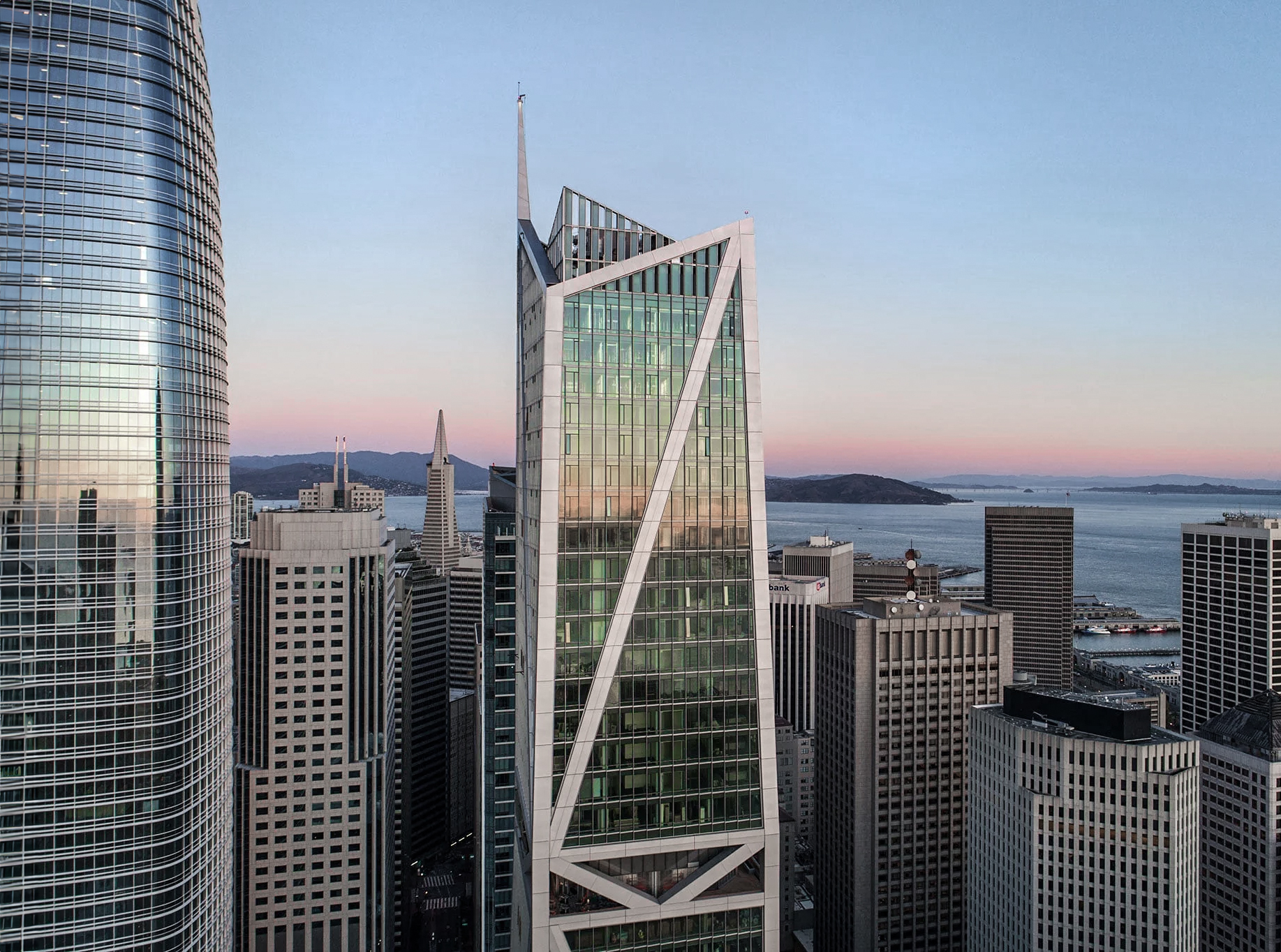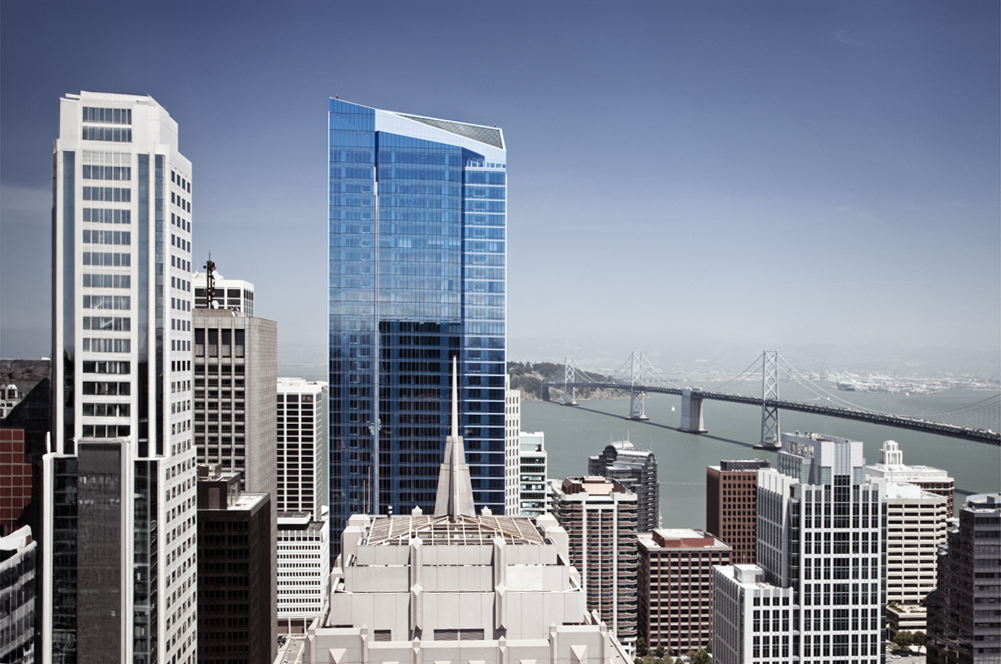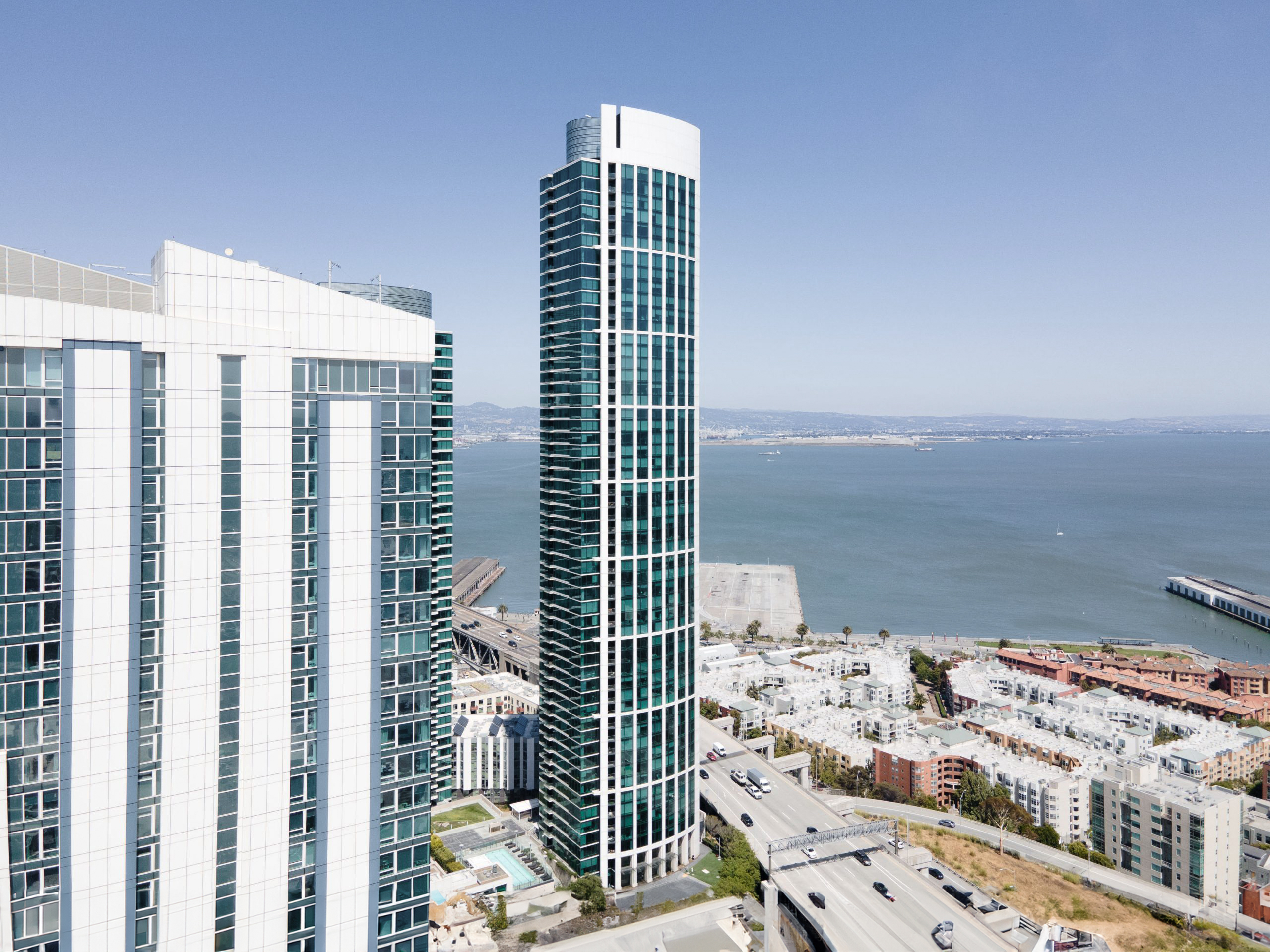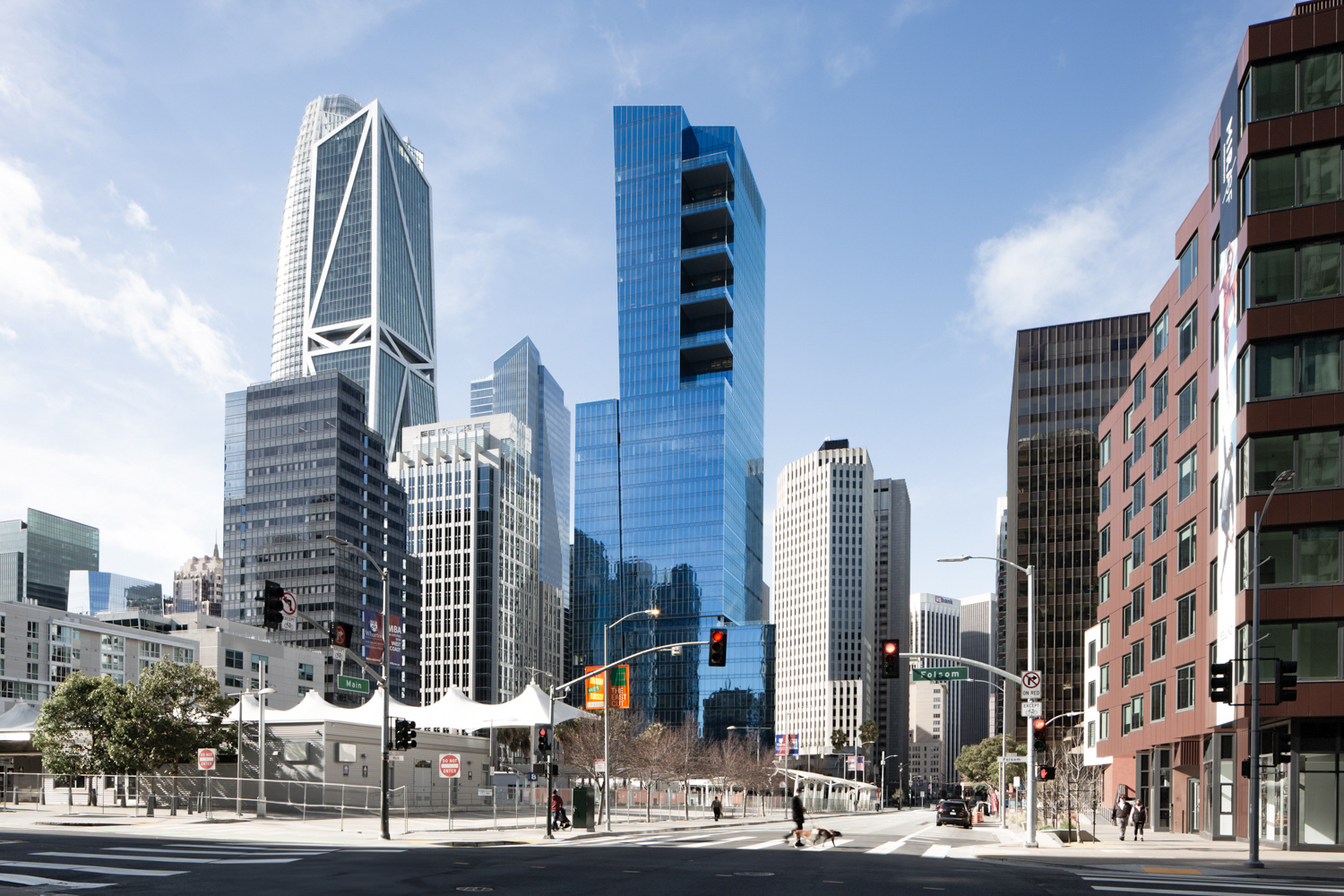The The Avery Building is a Contemporary skyscraper designed by OMA, with Shohei Shigematsu, and Jason Long as lead architect, in association with HKS, and built between 2014 and 2019 in San Francisco, CA.
The Avery Building is not the only name you might know this building by though. It is common for companies to want to attach their names to iconic buildings when they move in, or for the general public to come up with nicknames, and this one is no exception. The The Avery Building is also known, or has been known as, Transbay Block 8, or 400 Folsom.
Its precise street address is 488 Folsom Street, San Francisco, CA. You can also find it on the map here.
The building is composed of the tower and two lower buildings that form the podium.
A public passage divides the building's podium in two, connecting the neighborhood's main boulevard with a small pedestrian street. This division led to the creation of a commercial space that activates the base of the building and offers an urban living room with lush green walls and landscaping, providing a breathing space for the neighborhood .
